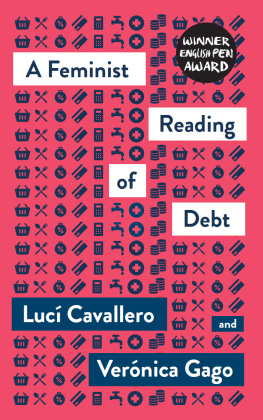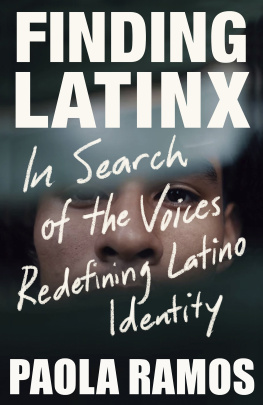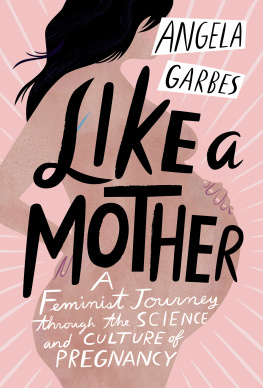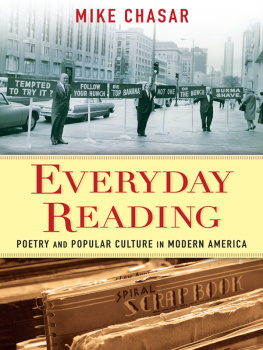Paola Bonifazio - The Photoromance: A Feminist Reading of Popular Culture
Here you can read online Paola Bonifazio - The Photoromance: A Feminist Reading of Popular Culture full text of the book (entire story) in english for free. Download pdf and epub, get meaning, cover and reviews about this ebook. year: 2020, publisher: MIT Press, genre: Romance novel. Description of the work, (preface) as well as reviews are available. Best literature library LitArk.com created for fans of good reading and offers a wide selection of genres:
Romance novel
Science fiction
Adventure
Detective
Science
History
Home and family
Prose
Art
Politics
Computer
Non-fiction
Religion
Business
Children
Humor
Choose a favorite category and find really read worthwhile books. Enjoy immersion in the world of imagination, feel the emotions of the characters or learn something new for yourself, make an fascinating discovery.

- Book:The Photoromance: A Feminist Reading of Popular Culture
- Author:
- Publisher:MIT Press
- Genre:
- Year:2020
- Rating:4 / 5
- Favourites:Add to favourites
- Your mark:
- 80
- 1
- 2
- 3
- 4
- 5
The Photoromance: A Feminist Reading of Popular Culture: summary, description and annotation
We offer to read an annotation, description, summary or preface (depends on what the author of the book "The Photoromance: A Feminist Reading of Popular Culture" wrote himself). If you haven't found the necessary information about the book — write in the comments, we will try to find it.
The Photoromance: A Feminist Reading of Popular Culture — read online for free the complete book (whole text) full work
Below is the text of the book, divided by pages. System saving the place of the last page read, allows you to conveniently read the book "The Photoromance: A Feminist Reading of Popular Culture" online for free, without having to search again every time where you left off. Put a bookmark, and you can go to the page where you finished reading at any time.
Font size:
Interval:
Bookmark:
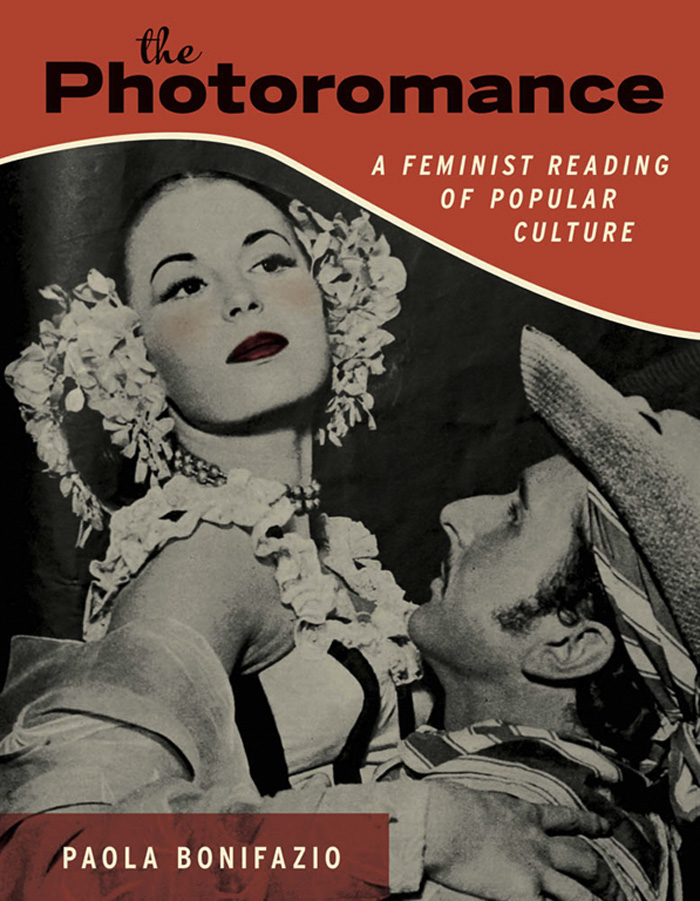
Paola Bonifazio
The MIT Press
Cambridge, Massachusetts
London, England
2020 Massachusetts Institute of Technology
All rights reserved. No part of this book may be reproduced in any form by any electronic or mechanical means (including photocopying, recording, or information storage and retrieval) without permission in writing from the publisher.
This book was set in Adobe Garamond Pro by New Best-set Typesetters Ltd.
Library of Congress Cataloging-in-Publication Data
Names: Bonifazio, Paola, 1976- author.
Title: The photoromance : a feminist reading of popular culture / Paola Bonifazio.
Description: Cambridge, Massachusetts : The MIT Press, 2020. | Includes bibliographical references and index.
Identifiers: LCCN 2019054074 | ISBN 9780262539289 (paperback)
Subjects: LCSH: Fotonovelas--Italy--History and criticism. | Romance fiction--History and criticism.
Classification: LCC PN6714 .B663 2020 | DDC 741.5/3543--dc23
LC record available at https://lccn.loc.gov/2019054074
10 9 8 7 6 5 4 3 2 1
d_r0
To Mamo
I want to thank:
My parents and my sister who have never read photoromances but always trusted that I had something important to say about them.
The many archivists and librarians who patiently worked with me on this project. Without their help, this book never could have been written.
The Office of the Vice President for Research and the College of Liberal Arts at the University of Texas at Austin, respectively, for the subvention grant that allowed this publication to happen (in color!) and for a Humanities Research Award that funded research for this project.
My friends and colleagues Alessandra Montalbano and Jonathan Mullins for their thoughtful comments on drafts of this manuscript; Giovanna Faleschini for her useful advice on this project; and Silvia Carlorosi for her encouragement.
Ruth Ben-Ghiat, Giorgio Bertellini, and Nicoletta Marini-Maio for their mentorship.
My colleagues in the Department of French and Italian for their support and for allowing me to take time off from teaching when I most needed it.
Victoria Hindley, the most enthusiastic and experienced acquisition editor I could have ever wished for, Gabriela Bueno Gibbs, and everyone else at MIT Press who helped in making this book.
Samantha Gillen for proofreading my manuscript.
All the Facebook members of photoromance fan groups who participated in my study, and all the anonymous users who responded to my research survey.
My graduate students, particularly those in my seminar Media Convergence and Transmedia Storytelling in Italy, for their challenging questions.
Silvia and Valeria for their friendship.
Petre, for I can always count on him and because hes much better than me with titles.
Pinguino, because life would not be as good without a dog.
Marco, just because he is.
Susanita reads photoromancesa form of graphic storytelling, including captions and balloons but using photographs instead of drawings (figure I.1). My research demonstrates that derogative portrayals of female fans ultimately reveal not only cultural anxieties toward the spread of mass culture, but also political resistance to the possible appropriation of this culture by female audiences.

Figure I.1
Comic strip. Joaqun Salvador Lavado (QUINO), Todo Mafalda, Ediciones de la Flor
I am using the term fan here to indicate the affective as much as irrational bond that characterizes the relationship between readers and photoromances in their negative representations. It is fandom that left- and right-wing Italian and French politicians anathematized, especially in the 1950s and 1960s; fans whom films and newsreels, television hosts and journalists ridicule, until today, in Italy and abroad. When involved in the business, directors or performers (especially when they already had or wished for a film career) felt the need to justify their decision on economic needs or argued that they thought of embarking on a pedagogical mission. In both cases, the effect is to create a hierarchy between producers and consumers in the name of proximity: the latter are too close to both texts and celebrities to be able to critically approach them. In this respect, the photoromance fan is inevitably feminized: women are both the privileged subjects of representation, in parodies or critique, and the main target audience; moreover, the media itself is labeled as feminine for it prompts shallow, emotional, and irrational behaviors. In this book, I show how female fans of photoromances embody the culture of consumption that is nurtured by this industry and that is threatening to authors (both writers and film directors) and their intellectual and political allies. Neither emancipated nor coopted by the media system, these fans, I argue, undermined the patriarchal order of Italian culture and society, particularly in the fifties and sixties, as well as the aims of radical feminist groups in the 1970s.
Also known as roman-photo (in French) and fotonovela (in Spanish), the so-called fotoromanzo was born in Italy in 1947 and then successfully exported all over the world, selling millions of copies per week.
Depictions of photoromance readers in Italian films ranged from pathetic or ironic perspectives that attempted to downplay the phenomenon to bitter, dramatic, or sarcastic visions of the end of civilization.
Italian film directors and critics parodied or mocked the photoromance industry and its female readership on the basis of cultural biases that were the very same ones used to attack film melodramas as products of entertainment, with respect to art cinema. In 1952, journalist Giorgio Capua, from the pages of the fan magazine Hollywood, claimed that fumetti killed cinema (by which he meant photoromances).
And yet, Hollywood was devoted, for the most part, as its title conveys, to the discussion of American films and the private engagements and public commitments of movie stars (both Italian and foreign). In this sense, the rhetoric used in Capuas tirade with regard to the photoromance industry and its stars ironically corresponded to the same that had been employed to derogate fan magazines and the film industries that supported them. Indeed, those who loved Raffaello Matarazzos weepies, starring film stars Yvonne Sanson and Amedeo Nazzari (often featured in fan magazines), had the same appreciation for photoromances. It is well known that his Catene (Chains, 1949) and Tormento (Torment, 1950) were titles of likewise lucrative products published in Bolero Film before being explosively successful films, and that both Matarazzo and Bolero Film were looked down on by film critics who promoted cinema as an art or as the political tool to emancipate the masses and build a national identity. In other words, if photoromances were threatening the predominant role occupied by cinema in the cultural hierarchy, they were in good company with genre movies.
Hollywood films, Matarazzos melodramas, and photoromances were similarly blamed for escapism and as tools of capitalist domination. In a revealing comment to a readers letter, the leftist film journal
Next pageFont size:
Interval:
Bookmark:
Similar books «The Photoromance: A Feminist Reading of Popular Culture»
Look at similar books to The Photoromance: A Feminist Reading of Popular Culture. We have selected literature similar in name and meaning in the hope of providing readers with more options to find new, interesting, not yet read works.
Discussion, reviews of the book The Photoromance: A Feminist Reading of Popular Culture and just readers' own opinions. Leave your comments, write what you think about the work, its meaning or the main characters. Specify what exactly you liked and what you didn't like, and why you think so.


